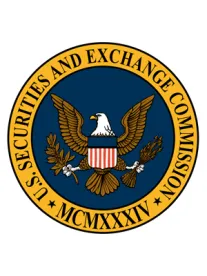The second quarter of 2017 was relatively quiet for the US Securities and Exchange Commission (SEC). As many commentators anticipated, the SEC’s pace of rulemaking slowed significantly in recent months. Nonetheless, there were several developments of note in the capital markets and public company regulatory fields. The US Supreme Court’s unanimous ruling in Kokesh v. Securities and Exchange Commission could have long-lasting implications for the SEC’s enforcement powers. In addition, the close of the second quarter brings public filers another quarter closer to the FY 2018 effective date of the new revenue recognition guidance (ASC 606) issued by the Public Company Accounting Oversight Board (PCAOB).
Supreme Court’s Ruling on Disgorgement Order by the SEC
On June 5, 2017, the Supreme Court ruled 9-0 in Kokesh v. Securities and Exchange Commission that SEC disgorgement claims for violations of federal securities laws constitute a penalty and are therefore subject to the five-year statute of limitations on civil penalties provided in 28 U.S.C. § 2462. Justice Sonia Sotomayor, writing the opinion for the Court, noted that SEC disgorgement “bears all the hallmarks of a penalty: It is imposed as a consequence of violating a public law and it is intended to deter, not to compensate.”
The Supreme Court’s holding in Kokesh places a significant limit on the total dollar value of disgorgement penalties the SEC will be able to impose for violations of the federal securities laws. This much was evident in the Kokesh case itself wherein $29.9 million of the $34.9 million disgorgement judgement handed down by the district court against investment fund owner Charles Kokesh pertained to years prior to the five-year window provided for by the statute of limitations.
While the Kokesh ruling itself places a significant constraint on one of the SEC’s primary enforcement tools, the Court’s opinion also leaves open the possibility for future challenges to disgorgement actions. Footnote 3 of the Kokesh opinion provides:
“Nothing in this opinion should be interpreted as an opinion on whether courts possess authority to order disgorgement in SEC enforcement proceedings or on whether courts have properly applied disgorgement principles in this context. The sole question presented in this case is whether disgorgement, as applied in SEC enforcement actions, is subject to §2462’s limitations period.”
With that footnote, the Court refrained from commenting on the appropriateness of the application of disgorgement principles in SEC enforcement proceedings, leaving the door open to such a future challenge.
Finally, although the Court’s opinion does not refer to disgorgement as a civil penalty, by finding that disgorgement is within the scope of applicability of § 2462 (which applies to civil penalties), the Court may be signaling that a disgorgement order is in fact a “civil monetary penalty.” The statutory limitations for civil monetary penalties, set pursuant to the Federal Civil Penalties Inflation Adjustment Act Improvements Act of 2015, consist of fixed, inflation-adjusted figures. If disgorgement orders are determined to be civil monetary penalties subject to those statutory limitations, the SEC’s capacity to seek damages would be further limited.
Reminder: Hyperlinks to Exhibits in SEC Filings
SEC adopted final rules and form amendments requiring issuers to include a hyperlink to each previously filed exhibit in the exhibit index of registration statements and periodic reports.
Issuers must comply with the final rules for filings submitted on or after September 1, 2017. Smaller reporting companies that are neither large accelerated filers nor accelerated filers and that submit filings in American Standard Code for Information Interchange (ASCII) do not need to comply with the final rules until September 1, 2018.
SEC Expands the Availability of Confidential Treatment of Draft Registration Statements
On June 29, 2017, the SEC announced that it will accept voluntary draft registration statements from all issuers for non-public review. Specifically, the Division of Corporation Finance will accept and review, on a confidential basis, registration statements for IPO issuers as well as for issuers registering a new class of securities. In addition, the Division will accept and review, on a non-public basis, draft registration statements submitted prior to the end of the 12th month following the effective date of an issuer’s initial registration statement. The announcement of this new policy signals the SEC’s continued movement towards collaboration with issuers to facilitate access to the US capital markets. The SEC has released further guidance in the form of a Frequently Asked Questions guide regarding the voluntary submission of draft registration statements for those issuers that would like to know more.
SEC Chief Accountant Discusses PCAOB’s Role in Securities Regulation
On June 8, 2017, SEC Chief Accountant Wesley Bricker, made remarks before the 36th Annual SEC and Financial Reporting Institute Conference (“Advancing the Role of Credible Financial Reporting in the Capital Markets”). His remarks reaffirmed the importance of the role played by the Public Company Accounting Oversight Board (PCAOB) in the US securities regulatory framework.
Specifically, he highlighted the PCAOB’s standard setting function and the benefits that have accrued to the US securities regulatory framework (including the quality of independent audits) due to the PCAOB’s active role as a standards setting organization. In particular, Mr. Bricker focused on the final auditor reporting standard recently published by the PCAOB, “The Auditor's Report on an Audit of Financial Statements When the Auditor Expresses an Unqualified Opinion” (the ARM release).
If approved by the SEC, the ARM release would “retain a pass/fail opinion, while adding communication of critical audit matters, disclosure of audit firm tenure, and other revisions to clarify the auditor’s role and responsibilities and make the auditor’s report easier to read.” Mr. Bricker noted the importance of such a standard for the capital markets due to the fact that “investors are the primary beneficiaries of an audit and the auditor’s report is the primary means by which the auditor communicates to them.”
Remarks concluded with a call for continued innovation in financial reporting, indicating that the SEC will continue to focus on the use of new technologies to improve the US securities regulatory framework.
New Revenue Recognition Standard
For SEC reporting companies, FY 2018 represents the first year in which they must prepare financial statements consistent with the new revenue recognition standard ASC 606 . The principal change introduced by ASC 606 is the introduction of a five-step model for determining whether or not an entity may recognize revenue under its various agreements. Revenue is therefore only recognized under ASC 606 after completing the following five steps:
-
Identify the contract with the customer.
-
Identify the performance obligations in the contract.
-
Determine the transaction price.
-
Allocate the transaction price to the performance obligations in the contract.
-
Recognize revenue when the performance obligations are satisfied.
Each of the individual steps noted above require separate analyses and will have substantial implications for the ways that reporting companies recognize revenue.
In addition, reporting companies should remember to include transition disclosures in their Form 10-Q filings prior to the effective date of ASC 606. In SEC Staff Accounting Bulletin Topic 11M (“Disclosure of the Impact That Recently Issued Accounting Standards Will Have on the Financial Statements of the Registrant When Adopted in a Future Period”), the SEC staff has taken the position that a reporting company should provide transition disclosures with respect to the potential effects a recently issued, but not yet implemented, accounting standard will have on the company’s financial position and results of operations. Generally, a registrant should include the following transition disclosures:
-
A brief description of the new standard, including the adoption date.
-
A discussion of the allowable methods of adoption and the company’s expected adoption method, if determined.
-
A discussion of the impact that adoption of the standard is expected to have on the company’s financial statements, or a statement to the effect that such impact is not known or reasonably estimable.
-
Disclosure of the potential impact of other significant matters that might reasonably result from the company’s adoption of the standard.
With respect to ASC 606 in particular, the SEC’s Chief Accountant noted in recent remarks that the staff expects “a qualitative description of the effect of the new accounting policies, and a comparison to the company’s current accounting to aid investors’ understanding of the anticipated impact” in situations where the company does not know or cannot reasonably estimate the expected financial statement impact of ASC 606.







 />i
/>i
